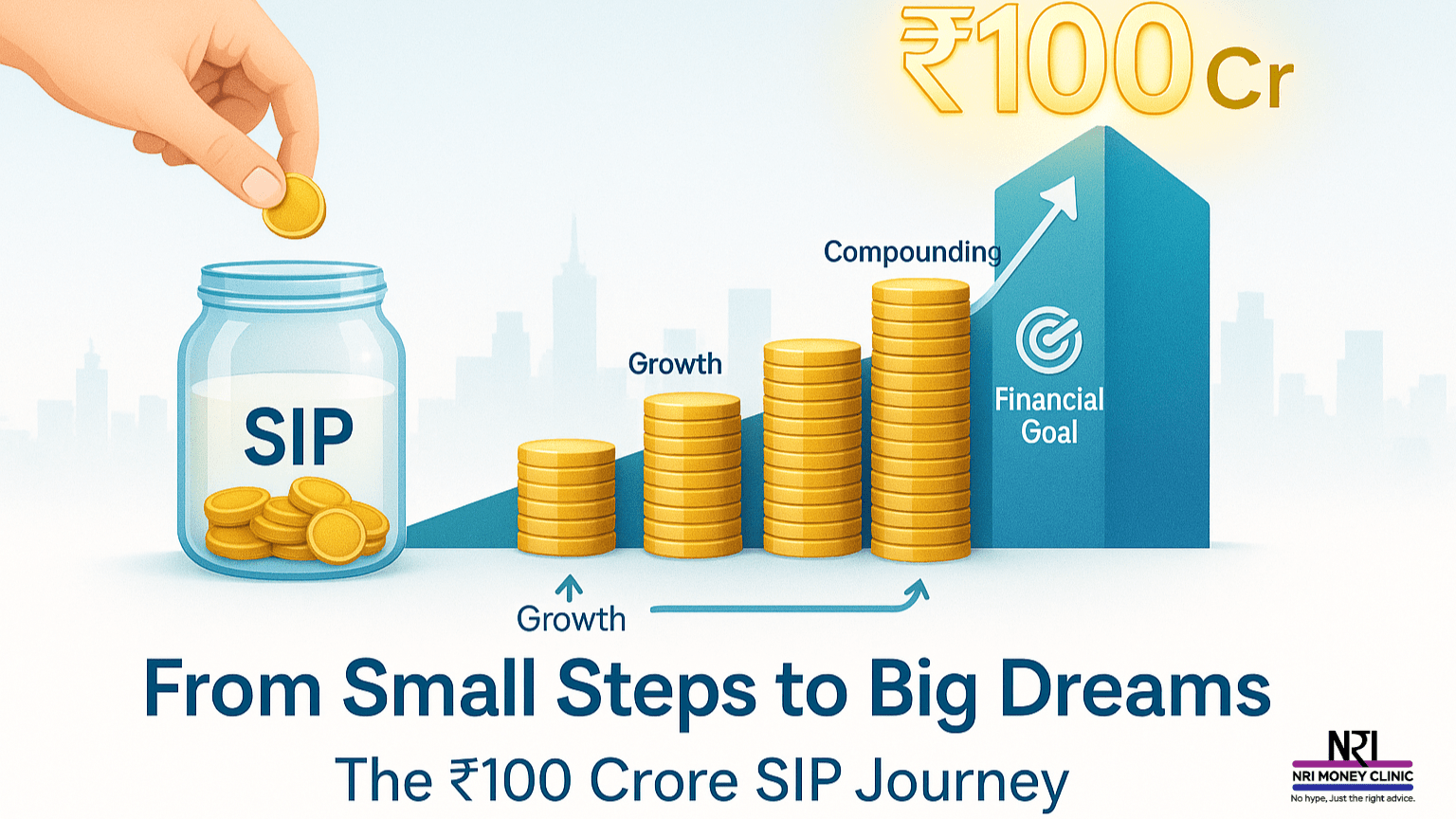What does a good financial advisor really look like?
Not the one with the fanciest brochures or the pushiest sales pitch — but the one who truly believes in their own advice.
A great analogy comes from a little South Indian thali restaurant in Mumbai’s Matunga — Ramanayak Udipi.
Two signs on the wall make it special:
“The owner eats here.”
“This is our kitchen. You’re welcome to step in.”
It’s about skin in the game and transparency.
That’s exactly how a good financial advisor should be — eating from the same pot as their clients, and keeping the kitchen open for everyone to see.
The “One Idiot” Inspiration
In 2011, a short film called One Idiot told the story of a man worth ₹100 crores who still lived simply. He revealed his “secret recipe” — years of patient investing, mainly through SIPs.
Inspired, Gajendra Kothari of Etica Wealth started his own ₹10,000 SIP at age 30, with a dream to hit ₹100 crores before turning 50. Over the years, he increased his contributions, stayed disciplined, and now uses this journey to show others that ordinary people can build extraordinary wealth — not through stock-picking genius, but through time, patience, and compounding.
Choosing the Right Advisor
When picking an advisor, ask:
Do they invest their own money the way they’re asking you to invest yours?
Are they solving problems or just selling products?
Do they simplify things instead of making them sound more complicated?
Like a good doctor, the right advisor makes you feel lighter just by being in the room. You walk out with more clarity, less stress — and a smile.
Advice Beyond Numbers
Wealth management isn’t just about beating market benchmarks. It’s about aligning money with life goals — sending your kids to the right college, retiring comfortably, and actually enjoying your wealth while you can.
An advisor’s role often shows up most powerfully in crises — like a pilot guiding you through turbulence. Sometimes, the best advice is to do nothing and stick to the plan.
The SWP & Bucket Approach
For retirement income, Gajendra swears by Systematic Withdrawal Plans (SWPs) combined with a bucket strategy:
Keep 3 years’ worth of expenses aside in safer funds.
Draw from equities in good markets.
Use your reserve bucket when markets are down, so you’re never forced to sell at the wrong time.
It’s simple, but requires discipline — and often, an advisor to stop you from letting fear or greed take over.
The Bigger Picture
Money should be a tool for freedom, not stress.
And freedom comes from balance — enjoying today while preparing for tomorrow.
As Gajendra puts it:
“Our job is to turn your bread into cake, and then take just one slice. The rest is yours to enjoy.”
If you’re looking for your own ₹100 crore journey, it won’t be about chasing 22% returns or timing the market. It will be about:
Starting small but starting early.
Increasing your investments as your income grows.
Finding an advisor who is in it with you.
Staying the course through market highs and lows.
Because wealth isn’t built overnight — it’s baked slowly, with patience, trust, and a dash of courage.
💬 What’s your “SIP journey” story? Have you started yours yet, or are you still waiting for the “perfect” time?



